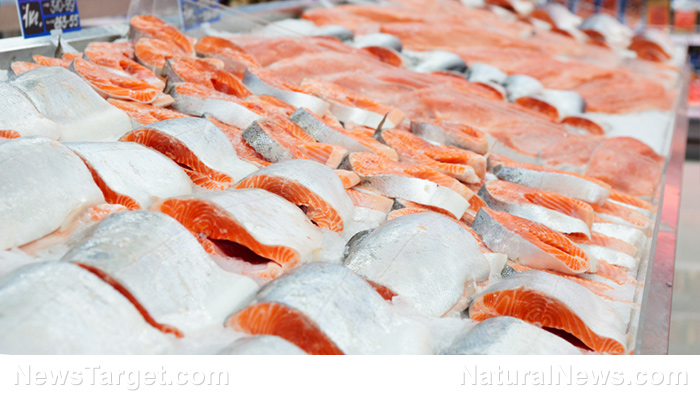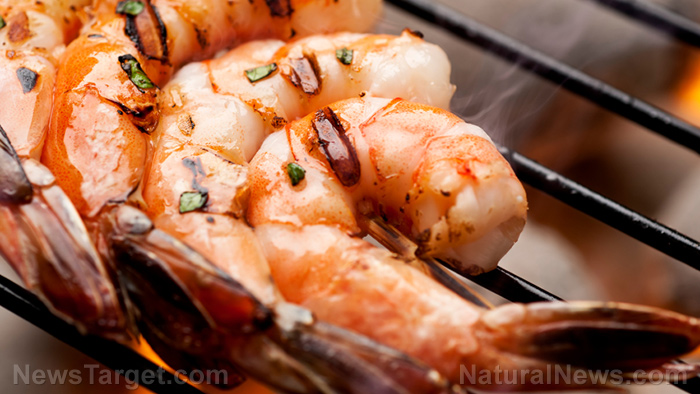Cut down unhealthy cravings with these 5 simple tools
07/11/2020 / By Virgilio Marin

If you’re trying to lose weight or eat more nutritious foods, there’s a good chance that you’ve struggled against food cravings.
Unlike hunger pangs, which happen over an empty stomach, food cravings are more consuming and specific. In addition, the cravings go beyond the need to satisfy hunger and are often limited to a particular food type. Experts say that most food cravings tap into the hedonic, or pleasurable, aspects of dining.
“The most palatable foods are those that are both energy-dense and high in fat content,” explains Adam Drewnowski, director of the University of Washington’s Center for Public Health Nutrition. “High-fat foods, many containing sugar or salt, have an undeniable sensory appeal and are difficult to resist.”
Master food cravings with 5 simple tools
Fortunately, you don’t have to be a slave to your appetite. Here are five simple tools to help you control your food cravings. (h/t to PsychologyToday.com)
1. Situation selection
Situation selection means avoiding places where your food temptations can be found. Being near to foods you’re craving for increases the strength of your desire. A simple solution is to stay as far away as possible from the food you’re craving – the same manner that people who want to stop drinking or smoking may want to avoid places where these occur. (Related: Smokers three times less likely to light up if they consume fruits and vegetables.)
2. Situation modification
Some situations are simply hard to avoid. Situation modification helps people deal with these occasions, such as eating, by changing their physical or social environment. This means changing the size of your plate or eating small portions of food at a time. People trying to eat less may find this strategy useful.
“Smaller portions lead us to eat less, even if we can refill the plate,” writes Shahram Heshmat, a professor at the University of Illinois at Springfield who specializes in health economics, in Psychology Today.
3. Attention
When you’re craving for a particular food, you are giving that object too much attention.
Try distracting yourself by focusing on other things or keeping yourself busy. By diverting your attention, you stop yourself from thinking too much of the food and instead reduce its effect on you.
4. Reframing
Unlike the previous strategy, cognitive reframing requires you to think of your craving. The catch is that you need to think of your craving differently.
“Focusing on the negative consequences of consuming the food or the beneficial consequences of not consuming the food function as powerful ways of decreasing food cravings through cognitive change,” says Heshmat.
That means reevaluating the food and your desire for it in a way that blunts its allure on you.
5. Response modulation
A common form of this strategy is suppression, where a person voluntarily and consciously inhibits expressing an emotion or, in this case, a food desire. The result of this strategy, Heshmat admits, is often mixed. It’s easy to buckle under intense pressure, and people tend to be impulsive given the stress of being busy.
Still, you can sit down to a plate of your most forbidden food desire and try to wrestle with the temptation.
Taking control of your cravings require work and serious concentration. But you don’t want to overexert yourself to the point that you merely shift your obsession.
Instead, a balanced diet should always be your top priority.
Learn more ways to maintain a healthy diet at Slender.news.
Sources include:
Tagged Under: addiction, cravings, diet, eating, fightobesity, food craving, overweight, Psychology, weight watching
RECENT NEWS & ARTICLES
StopEatingPoison.com is a fact-based public education website published by Stop Eating Poison Features, LLC.
All content copyright © 2018 by Stop Eating Poison Features, LLC.
Contact Us with Tips or Corrections
All trademarks, registered trademarks and servicemarks mentioned on this site are the property of their respective owners.




















